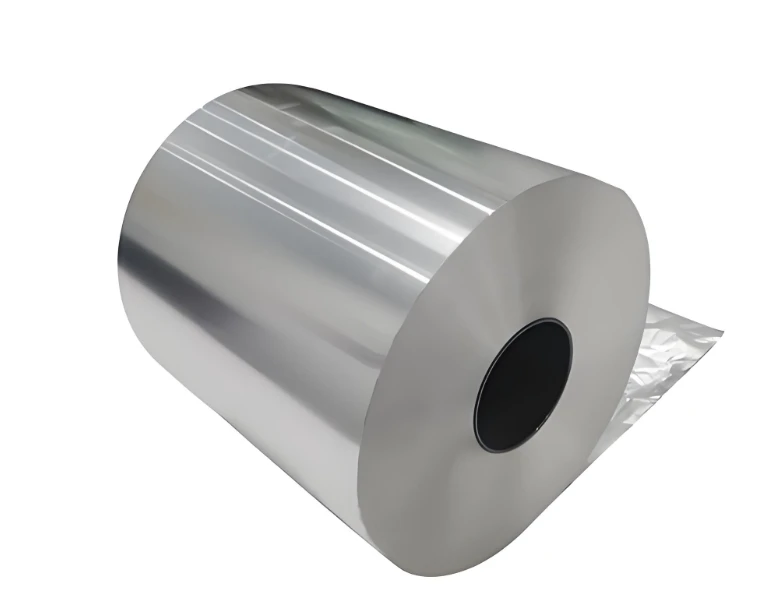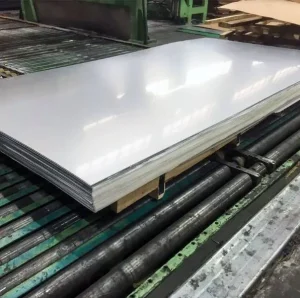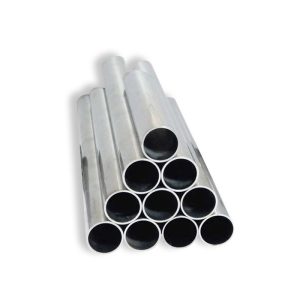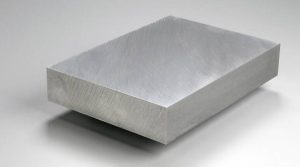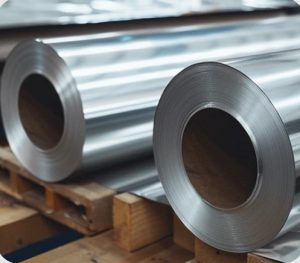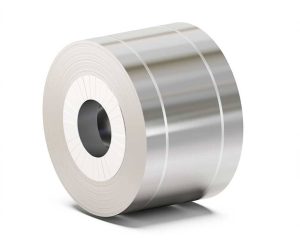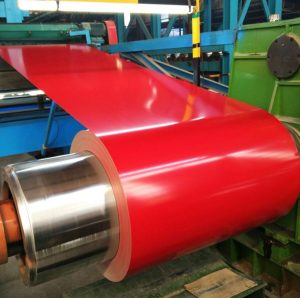In the rapidly evolving world of packaging, material innovation plays a pivotal role in enhancing product safety, sustainability, and consumer appeal. Among the various materials available, 5052 aluminum alloy foil has emerged as a revolutionary solution due to its exceptional properties and versatility. This comprehensive guide delves into the unique attributes of 5052 alloy foil, exploring its applications in three groundbreaking packaging solutions. We will analyze its chemical composition, compare it with other materials, and answer common questions to facilitate informed decision-making.
1. Understanding 5052 Aluminum Alloy Foil
1.1 Composition and Microstructure
5052 aluminum alloy is a non-heat-treatable, strain-hardened alloy predominantly composed of aluminum, magnesium, and trace elements like chromium and iron. Its typical chemical composition includes:
| Element | Content (%) | Functionality |
|---|---|---|
| Aluminum (Al) | ≥ 97.0 | Provides base matrix, corrosion resistance |
| Magnesium (Mg) | 2.2 – 2.8 | Enhances strength, improves corrosion resistance |
| Chromium (Cr) | Up to 0.35 | Contributes to corrosion resistance |
| Iron (Fe) | Up to 0.40 | Impacts surface finish and strength |
| Manganese (Mn) | Up to 0.10 | Improves strength and workability |
The microstructure of 5052 foil is characterized by a fine, uniform grain structure that lends itself to high ductility and formability. Its alloying elements create a passive oxide film, which significantly enhances corrosion resistance, especially in marine environments.
1.2 Physical and Mechanical Properties
| Property | Typical Value | Significance |
|---|---|---|
| Density | 2.68 g/cm³ | Lightweight, ideal for portable packaging |
| Melting Point | 607°C | Suitable for thermal processing |
| Tensile Strength | 193 MPa | Provides durability without compromising flexibility |
| Elongation | 12% | Ensures excellent formability |
| Hardness | 60 HRB | Maintains structural integrity during use |
These properties make 5052 foil particularly suitable for flexible packaging, where strength, ductility, and corrosion resistance are essential.
2. Manufacturing Process and Quality Standards
2.1 Production Techniques
The manufacturing of 5052 alloy foil involves several precise processes:
- Casting: Molten aluminum is cast into billets.
- Hot Rolling: Billets are heated and rolled into sheets.
- Cold Rolling: Sheets are further processed to achieve the desired thickness, often below 0.2 mm.
- Annealing: Heat treatment to relieve stresses and improve ductility.
- Surface Finishing: Processes like polishing or coating to enhance appearance and functionality.
2.2 Quality Control and Standards
To ensure high performance, 5052 foil undergoes rigorous quality checks aligned with international standards such as ASTM B209, EN 573, and ISO 6361. These standards specify dimensions, surface quality, mechanical properties, and corrosion resistance.
2.3 Thickness and Width Variability
The foil is available in various thicknesses, ranging from 0.02 mm to 0.2 mm, and widths up to 1600 mm, accommodating diverse packaging needs.
3. Key Properties Making 5052 Foil Ideal for Packaging
3.1 Corrosion Resistance
One of the most significant advantages of 5052 foil is its excellent corrosion resistance, especially in salty and humid environments. The magnesium content forms a protective oxide layer, preventing oxidation and degradation over time, which is critical for food, beverage, and pharmaceutical packaging.
3.2 Flexibility and Formability
The alloy’s high ductility allows it to be easily shaped into various packaging forms without cracking or tearing. Its ability to conform to complex shapes makes it suitable for wrapping irregularly shaped products.
3.3 Sealing and Barrier Properties
While not inherently a barrier material like plastics, 5052 foil can be combined with other materials to create composite packaging with excellent sealing capabilities. Its surface quality ensures strong adhesion with adhesives and coatings, enhancing barrier properties.
3.4 Sustainability and Recyclability
Being 100% recyclable, 5052 foil aligns with global sustainability goals. Its recyclability preserves material quality, reducing waste and environmental impact.
4. Three Revolutionary Packaging Solutions Using 5052 Alloy Foil
4.1 Solution 1: Eco-Friendly Flexible Food Packaging
Description
This solution leverages 5052 foil’s corrosion resistance, formability, and safety to create eco-friendly, lightweight food packaging. The foil is laminated with biodegradable plastics or paper to form flexible pouches, wrappers, and trays.
Advantages
- Enhanced Shelf Life: Its barrier properties prevent moisture and oxygen ingress.
- Recyclability: Fully recyclable, reducing environmental footprint.
- Food Safety: Non-toxic and inert, complying with food-grade standards.
Applications
- Snack wraps
- Ready-to-eat meal packaging
- Fresh produce bags
4.2 Solution 2: Pharmaceutical and Medical Packaging
Description
In this application, 5052 foil is used to produce blister packs, medical pouches, and sterilization wraps. Its corrosion resistance ensures the integrity of sensitive products, and its flexibility allows for easy sealing.
Advantages
- Barrier to Contaminants: Protects against moisture, oxygen, and bacteria.
- Sterility Maintenance: Suitable for sterilization processes like ethylene oxide or gamma radiation.
- Easy to Seal: Compatible with heat sealing, ensuring secure packaging.
Applications
- Vaccine containers
- Medical device wraps
- Sterile surgical packs
4.3 Solution 3: High-End Decorative Packaging and Branding
Description
5052 foil’s excellent surface finish and corrosion resistance make it ideal for premium packaging, including luxury cosmetics, jewelry, and electronics.
Advantages
- Aesthetic Appeal: Can be polished or coated for visual enhancement.
- Durability: Maintains appearance over time.
- Brand Differentiation: Unique packaging that emphasizes quality and sophistication.
Applications
- Cosmetic boxes
- Gift wrap foils
- Electronic device covers
5. Comparative Analysis of Packaging Materials
| Material Type | Corrosion Resistance | Flexibility | Barrier Properties | Sustainability | Cost | Typical Uses |
|---|---|---|---|---|---|---|
| 5052 Aluminum Foil | Excellent | High | Moderate (with laminates) | Recyclable | Moderate | Food, Pharma, Decorative |
| Plastic Films | Moderate | Very High | Good | Non-recyclable (in many cases) | Low | Food, Consumer goods |
| Steel Foil | Excellent | Moderate | Good | Recyclable | High | Heavy-duty packaging |
| PVC Films | Moderate | High | Moderate | Non-recyclable | Low | Food wraps, Labels |
Note: 5052 foil offers a unique balance of durability, flexibility, and sustainability compared to other packaging materials.
6. Future Trends and Innovations
6.1 Nano-Coating Technologies
Applying nano-coatings on 5052 foil can significantly enhance barrier properties, making it suitable for highly sensitive products like pharmaceuticals and specialty foods.
6.2 Biodegradable Laminates
Developing biodegradable laminates with 5052 foil can lead to fully eco-friendly packaging solutions, aligning with global sustainability initiatives.
6.3 Smart Packaging Integration
Incorporating sensors or RFID tags into 5052 foil-based packaging can provide real-time monitoring of product freshness, temperature, and tampering, revolutionizing supply chain management.
7. Common Questions About 5052 Alloy Foil in Packaging
Q1: Why is 5052 alloy foil preferred for food packaging?
Answer: 5052 foil’s high corrosion resistance prevents spoilage caused by moisture and oxygen ingress. Its inert nature ensures food safety, and its excellent formability allows it to be shaped into various packaging formats. Additionally, being recyclable aligns with eco-conscious consumer preferences.
Q2: How does 5052 foil compare to plastic films in packaging applications?
Answer: While plastic films often offer superior barrier properties and flexibility, 5052 foil provides better environmental sustainability due to its recyclability and durability. It also offers superior corrosion resistance and can be combined with plastics for enhanced barrier performance.
Q3: Can 5052 foil be used for sterilization packaging?
Answer: Yes, 5052 foil is suitable for sterilization packaging because it withstands various sterilization methods like gamma radiation, ethylene oxide, and autoclaving. Its corrosion resistance ensures the integrity of sterile products over time.
Q4: What are the environmental benefits of using 5052 foil in packaging?
Answer: 5052 foil is 100% recyclable, reducing landfill waste. Its durability extends product shelf life, minimizing food waste. Moreover, its recyclability preserves material quality, supporting circular economy principles.
Q5: How does 5052 foil enhance branding and consumer appeal?
Answer: Its smooth surface finish can be polished or coated for aesthetic appeal. The foil’s premium feel and durability make packaging more attractive, helping brands differentiate themselves in competitive markets.
Q6: What are the challenges of using 5052 foil in packaging?
Answer: The main challenges include higher costs compared to plastics and the need for specialized equipment for lamination and sealing. Additionally, some consumers may prefer biodegradable plastics over metal foils, prompting ongoing innovation.
Conclusion
5052 alloy foil stands out as a revolutionary material in modern packaging solutions. Its exceptional corrosion resistance, flexibility, environmental benefits, and aesthetic potential make it suitable for diverse applications—from eco-friendly food packaging to high-end decorative uses and sensitive medical supplies. As technological advancements continue, the integration of nano-coatings, biodegradable laminates, and smart features will further enhance its role in sustainable, innovative packaging.


